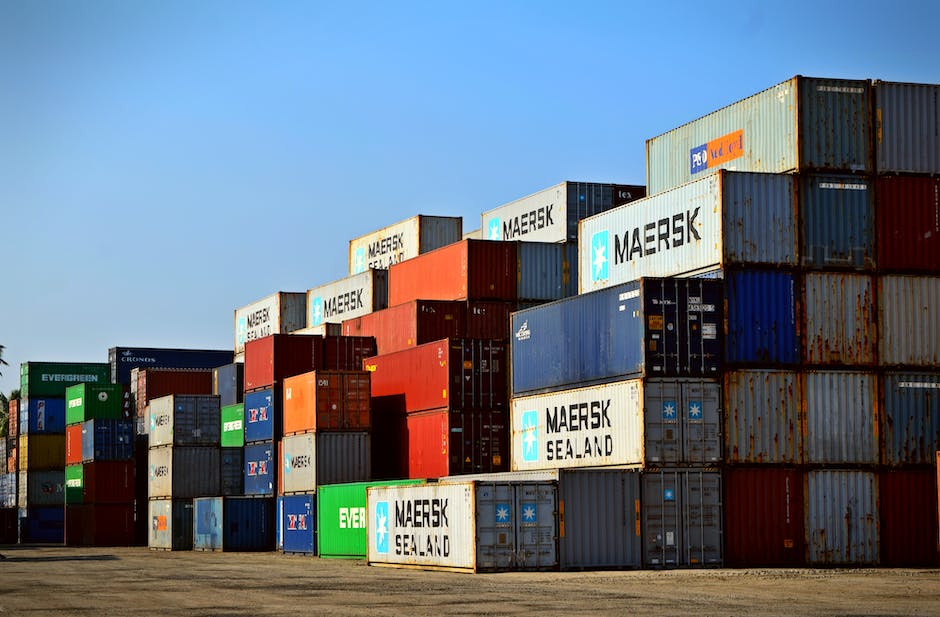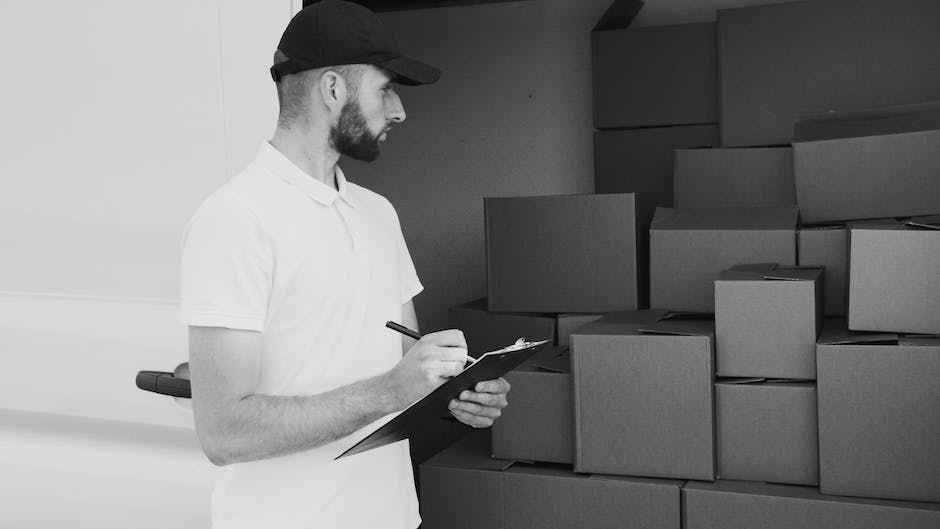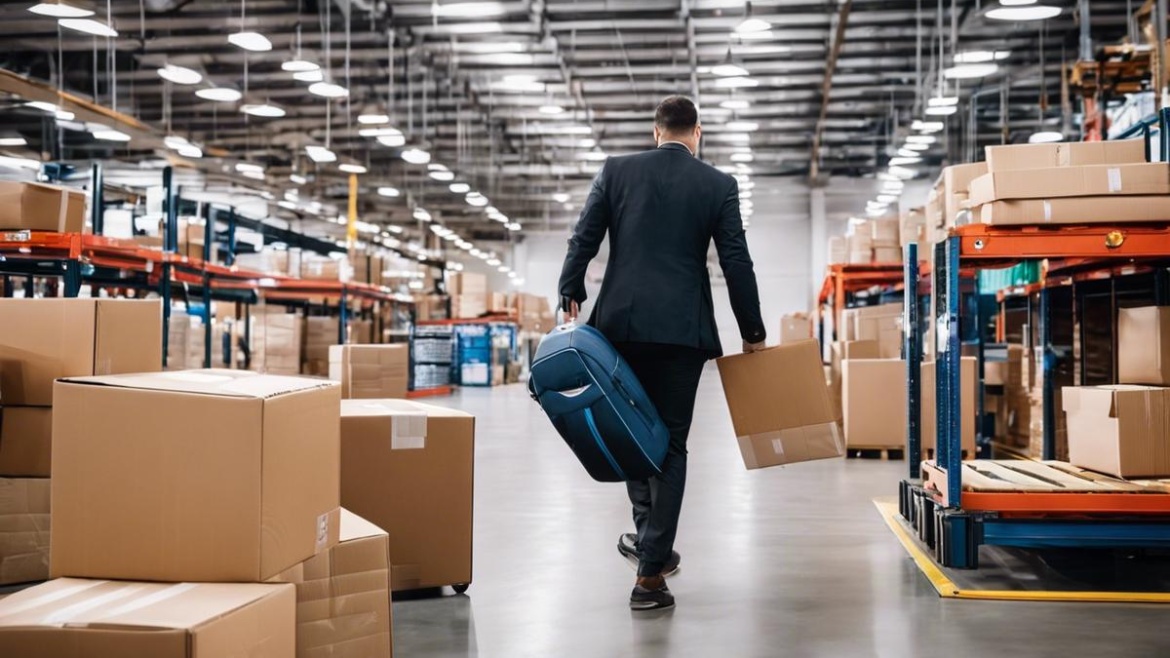The COVID-19 pandemic has fundamentally reshaped countless industries worldwide, and the moving sector is no exception. Our exploration paves the way to better understand the significant shifts in this industry, ranging from market dynamics, to innovative safety solutions, to financial impacts on both businesses and consumers. With the transformation of our everyday lives, the article unveils how businesses have strategically adjusted their modes of operation, ventured into emerging opportunities, and responded innovatively to new challenges posed by the pandemic. Furthermore, we delve into the influence of regulatory changes enacted in response to COVID-19 and the potential implications for both entrepreneurs and consumers navigating this changing landscape.
Market Shifts in The Moving Industry Due to Covid-19
The covid-19 pandemic has undeniably dealt a hard hand to a multitude of businesses worldwide. However, the practical rule of economy applies here: in turbulence, there are losers, but there are winners too. Let’s have a good look at the moving industry. Its market has seen some unexpected yet remarkable shifts during these challenging times.
Firstly, to speak of geo patterns in the context of the moving industry, there has been a seismic shift towards suburban and rural areas. Urban hotspots like New York and San Francisco have seen large outfluxes of citizens seeking greener and more spacious pastures. Remote working policies rolled by companies have given workers latitude to live farther from city centers. Giants like Staples, Woolworths, and Twitter are among the many embracing the new remote norm. Consequently, a more flexible workforce has spurred demand for moving services, especially long-distance ones.
Secondly, dig a bit deeper: there’s also been a robust demand for storage services. Due to the uncertainty of the situation, people have been stuck in limbo. Some have downsized their homes and needed space for their belongings. Others have had to abruptly relocate due to job changes or any number of pandemic-induced circumstances. All of this has created a buoyant market for storage services. Hence, moving companies that offer integrated moving-storage solutions have seen their prospects brighten.
Next, the commercial moving landscape has also undergone a significant metamorphosis, albeit less rosy. A by-product of the work-from-home trend is a diminished need for commercial real estate. Many organizations are downsizing their office spaces or doing away with them entirely. This downturn puts a dent in the demand for commercial moving services.
Innovation we trust. Forward-thinking businesses in the moving industry have turned adversity into opportunity. Tech adoption has accelerated exponentially. Virtual consultations, contactless transactions, enhanced sanitation protocols – the norm of the industry has been overhauled. The moving industry isn’t just surviving; it’s evolving, powered by a technologically driven revolution.
Finally, we can’t overlook the financial angle. The monetary framework of the moving industry has become more dynamic now. With societal shifts like enhanced sanitation regulations and remote work raising operational costs, pricing models are being adjusted. Additionally, federal aid and loan programs have proven essential lifelines, providing a financial cushion to these businesses.
Every crisis is an opportunity in disguise. The moving industry, amidst this global calamity, is showing us a textbook example of how to bounce back stronger from a crisis. It’s not just about adapting anymore; it’s about defining the new normal.

Innovative Solutions for Safe Residential and Commercial Moves
Imaginative Solutions for Safe Moving During COVID-19: Surviving and Thriving in a Pandemic-hit Market
The ongoing global crisis caused by COVID-19 has stirred up many industries and the moving industry is no exception. However, it’s not all doom and gloom. Savvy entrepreneurs are introducing a range of ingenious solutions that ensures uninterrupted and safer residential and commercial moves during this perilous time. Let’s delve into some of these pioneering solutions.
Safety has always been a priority in the moving industry. The pandemic has further doubled down on the need for safety protocols. Businesses are now utilizing personal protective equipment (PPE), sanitizers, and health monitoring gadgets as a standard operating procedure. Many moving companies are investing in training programs to effectively equip their workers with knowledge about the virus and ways to reduce its spread, significantly lowering the susceptibilities shown earlier in the pandemic.
Virtual estimates are another innovative solution revolutionizing the moving industry during the pandemic. This feature enables customers to get quotes via video calls, thereby decreasing face-to-face interactions. In many ways, this is an improvement over traditional estimation methods that required professionals to visit customers’ homes or offices. Tech-savvy companies are not stopping at video calls; they’re also developing mobile apps with built-in estimation features promoting a more immersive and convenient experience.
The integration of no-contact moves in the moving industry has drastically reduced physical interactions, making moving safer and more streamlined. With this innovation, customers pack all their belongings and leave them outside their abode. The moving company then picks it up, transports it, and leaves it at their desired location. This style capitalizes on convenience while prioritizing safety.
Finally, flexible scheduling and cancellation policies are also notable innovations coming to the forefront during these trying times. Many moving companies are adopting flexible policies to protect their customers, both in health and finances. This adaptation allows customers to reschedule or cancel their moves without additional costs if their plans have been disrupted due to a sudden change in pandemic-related conditions.
While there’s no way to circumvent the impact of COVID-19 entirely, resilient entrepreneurs in the moving industry are utilizing these innovative solutions to sail through the storm. They show the capability to adapt, pivot, and reinvent in this ever-evolving crisis, proving once again that business, at its heart, is about fulfilling customers’ needs in the most efficient and effective ways available, no matter the situation. Their ingenuity may well redefine the future of the moving industry long after the world has overcome this pandemic.

Financial Impact on Moving Businesses and Consumers
Trends in Consumer Behavior and Financial Implications
The moving industry, just like any other business sector, has experienced the effects of the Covid-19 pandemic, not only in the way business is conducted, but also in the evolving trends of consumer behavior. The pandemic has, understandably, triggered anxiety around moving, and many consumers have postponed or canceled their plans. For those who have chosen to move, however, there has been a noticeable rise in the demand for flexible payment schedules, at times even seeking installment options to alleviate the financial strain brought about by the Covid-19 circumstances.
This can be attributed to the financial hardship that consumers have faced during the pandemic, such as income loss due to layoffs, businesses shutting down, and wage cuts. Consequently, it has been observed that some consumers are asking for discounts or opting for more affordable moving services, such as moving truck rentals and moving equipment rentals, rather than full-service moves, as a way of offsetting costs.
For the moving industry, this change in financial behavior may lead to a squeeze in revenue margins. However, savvy businesses have found opportunities to thrive by offering tiered pricing options to cater to different financial abilities and being adaptable with their payment arrangements.
Changes in Insurance Requirements
The uncertain environment created by the pandemic has amplified the need for moving insurance. Although it was previously considered an added expense by many, it has now emerged as an essential safeguard for consumers who have had to relocate under pandemic circumstances. This heightened demand has led to insurance becoming a vital value proposition for businesses within the moving industry.
For consumers, it assures financial protection against potential loss or damage to their belongings during the move. For moving companies, offering comprehensive insurance coverage can be an opportunity to differentiate their services, build trust with consumers, and retain customer loyalty, thereby improving their financial position amid the pandemic.
Diversification and Partnerships
Another significant trend that is opening up new financial prospects within the moving industry is the strategy of diversification and forming partnerships. Services such as packing and unpacking, home cleaning, disposal of unneeded items, or set-up at the new location are among the additional offerings some moving companies have begun providing.
Moreover, strategic alliances with related businesses have also come into play to bolster revenues. Real estate agencies, storage facilities, and even home improvement stores can provide a mutual referral network that boosts business for all parties involved.
In Conclusion
While the pandemic’s financial impact on the moving industry and its consumers is undeniable, it also presents an opportunity for transformation. The companies that thrive are the ones utilizing creativity, adaptability, and client-centric strategies during this challenging time. These strategies, born out of a need to survive a pandemic, are poised to redefine the moving industry’s future.

Regulatory Changes and Its Influence on The Moving Industry
Emerging Regulatory Changes in the Moving Industry
Sometimes, to really keep your finger on the pulse of an industry, you have to go beyond the visible surface of the market trends and financial fluctuations. One key area often overlooked, but of immense importance, is the impact of regulatory changes on both the business and the consumer. This holds especially true for the moving industry – a dynamic environment shaped by consumer’s shifting preferences and external challenges, such as the recent pandemic. Four regulatory changes stand out as crucial factors every mover and consumer should take into account.
-
Firstly, the introduction of enhanced data protection laws is changing the landscape. Stricter privacy regulations are being implemented worldwide, impacting how moving companies collect, use, and store customer data. Violations of these laws can result in significant fines, instilling a renewed focus on privacy policies and security measures within the industry. Consumers should therefore prioritize companies that comply with these laws, ensuring their personal information is protected.
-
Furthermore, environmental regulations have become a key area of focus. Authorities are giving greater weight to sustainable practices and pushing for ‘greener’ operations. Movers are responding to these regulations by investing in fuel-efficient vehicles, reducing waste during moves, and increasingly providing reusable packing materials. This greener focus in operations provides a double win for the consumer – helping to preserve the environment, and potentially reducing moving costs.
-
Thirdly, safety regulations have become far more stringent. In the aftermath of the COVID-19 pandemic, authorities are introducing more rigorous standards to guarantee the health and safety of both workers and customers. It’s key for moving businesses to adapt to these new safety measures, whether that means regular testing of employees, or stricter protocols to maintain hygienic conditions during moves.
-
Last, but certainly not least, is the area of employee rights and labor laws. With growing spotlight on gig economy workers’ rights worldwide, moving companies are bound to adhere to labor laws more than ever before. Minimum wage laws, overtime compensation, and workers’ right to unionize are under greater scrutiny. Moving companies need to thoroughly understand these laws to prevent lawsuits and maintain happy, productive workers. Consumers, for their part, must be wary of companies that exploit their workers, as this may affect the quality of their service.
To conclude, these regulatory changes encapsulate a significant shift in the way the moving industry operates. Not only do they pose a challenge for moving companies, but they also provide a chance to reconsider business models, adapt, and focus on what is truly necessary: delivering an exceptional, secure and trustworthy moving experience, with the best interest of both workers and customers at heart. Anticipating and embracing these changes puts businesses ahead of the curve, and empowers consumers in their decision-making process. Ultimately, the adaptability and awareness of both parties will define the success and future of the moving industry.

Predictions for Post-Covid Moving Industry
Amidst this multifaceted landscape of the moving industry, one cannot ignore the escalating significance of enhanced data protection laws. In an era where businesses pivot on data-driven insights, the moving industry is not exempted. The integration of technology within moving services necessitates stringent data protection measures. Companies have a responsibility not just to move customer belongings, but to safeguard the sensitive data embedded in every transaction. This heightened focus on data security is likely to emerge as a distinctive feature of the post-pandemic moving industry.
Simultaneously, as society edges towards a sustainable future, the moving industry must follow suit. The implementation of environmental and sustainability practices, such as optimization of routes to save fuel and reduction in packing materials, will be crucial. This adoption of green practices, not just as an obligation, but as a value proposition, can generate a competitive advantage, allowing companies to appeal to an eco-conscious consumer market.
Furthermore, proactive safety measures will remain central as the world navigates this health crisis and anticipates any future global health events. Adherence to safety regulations is no longer a choice but a compulsory requirement to maintain mutual trust and safety. This includes routine sanitization of trucks and equipment, vaccine mandates for employees, and continuous monitoring of the evolving virus situation.
Finally, let’s not overlook the implications of employee rights and labor laws within the moving industry, especially in the burgeoning gig economy. Flexible work arrangements, fair compensation, and adequate health benefits constitute the tripod of worker satisfaction and retention. It is quite plausible that companies promoting worker equity and welfare will enjoy a competitive edge in the post-pandemic era.
To summarize, the future of the moving industry post-pandemic is likely to be defined by enhanced data security, adoption of sustainable practices, adherence to stringent safety norms, and upholding employee rights and satisfying labor laws. By focusing on these leading-edge shifts, businesses in the moving industry can recover, adapt, and thrive in the new normal.

As we continue to navigate through this unprecedented time, the resilience and adaptability of the moving industry – gearing towards a post-Covid era – will largely dictate its future trajectory. It’s compelling to foresee potential business opportunities, success-centric strategies, and influential factors leading to the industry’s growth post-pandemic. These insights serve as an eye-opener for both industry stakeholders and customers by providing an understanding of the past, a survey of the present, and prospects for the future. Enduring COVID-19’s challenges has reaffirmed the industry’s resilience that will undoubtedly continue guiding it towards a path of recovery and prosperity in the post-pandemic world.

